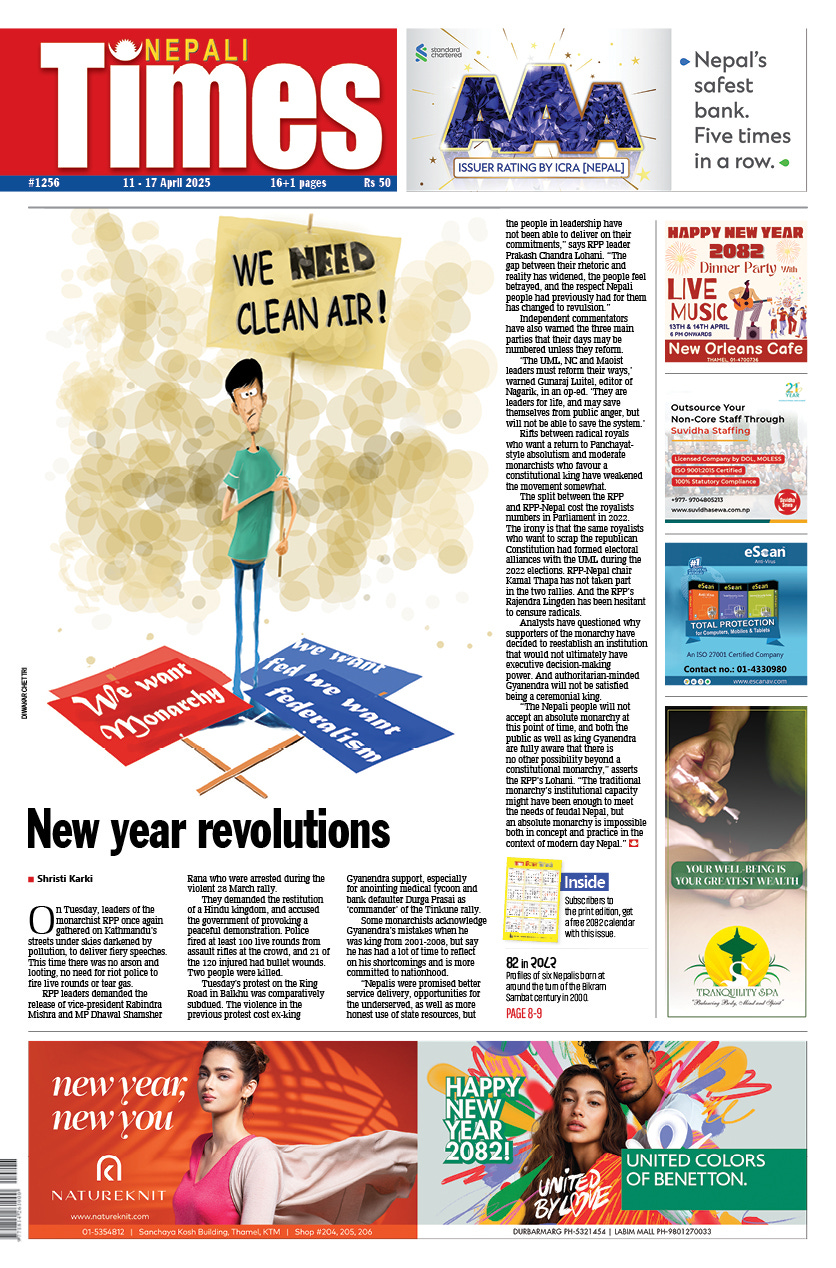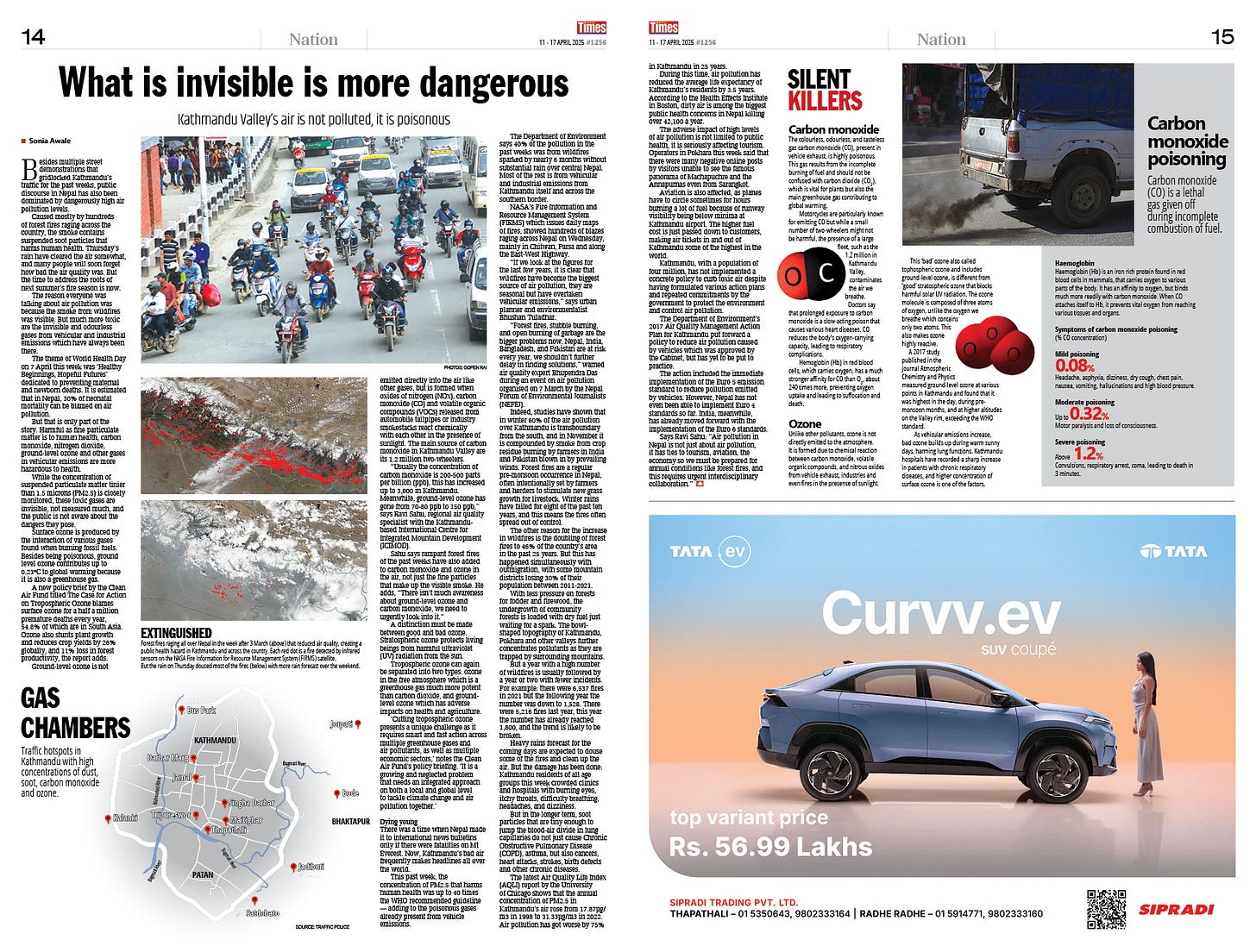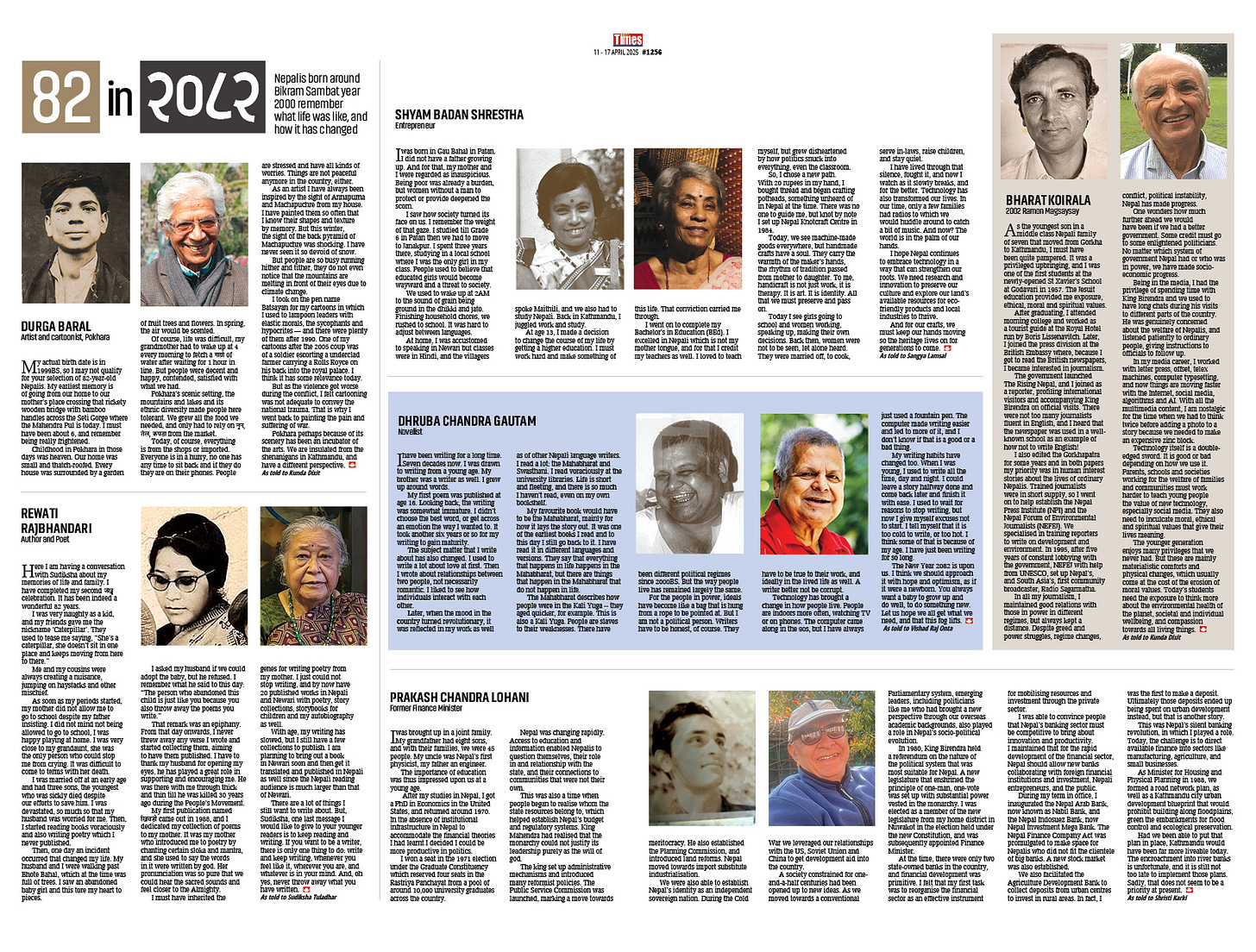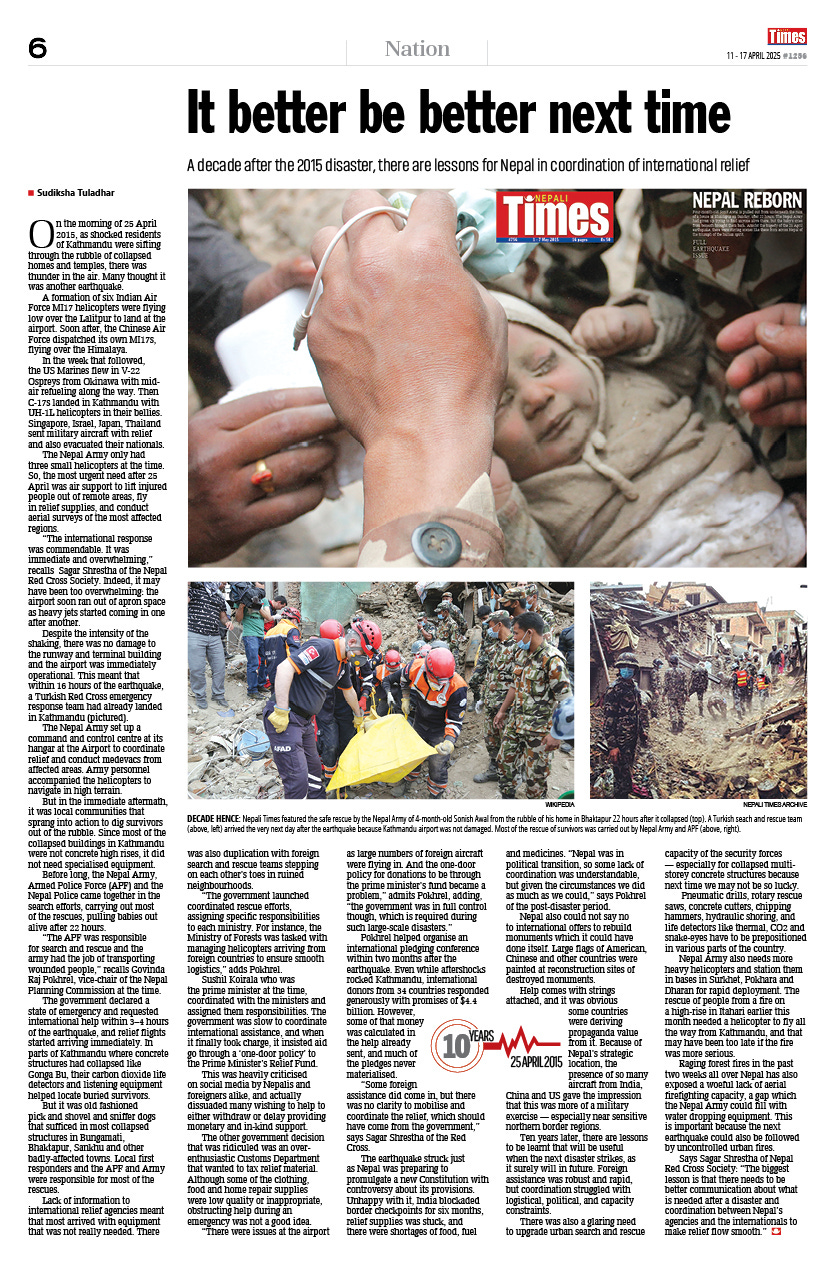Hi Guyz,
The reason I love Nepal and have not emigrated yet is that this is a land of choices. You have a choice between veg momos and non-veg momos.
On Kathmandu’s roads, I can pick between dust or mud. Bored with droughts? There are floods. On the highways we have an exciting selection of potholes, landslides and collapsed bridges, or all of the above. On domestic flights, our plane will either be delayed or cancelled, and if we are lucky it will even be preponed without notice.
Tick one: explosive diarrhoea or giardia. To breathe, you can opt for smog or smoke.
You even have a choice of street demonstrations to join: at the moment there are four going on simultaneously at Kathmandu’s major intersections: the teacher’s union, cooperatives victims, royalists and pro-Cool Man Ghising rallies.
But, as Diwakar Chettri’s cartoon on page 1 of this issue shows, none of the demos are to protect the government’s inability to clean up Kathmandu Valley’s dirty air that is reducing our collective lifespan by several million years.
Editor Sonia Awale reminds us that Kathmandu’s air is not just polluted, but poisonous. Invisible and odourless gases like carbon monoxide and ground-level ozone from the tailpipes of fossil fuel vehicles are actually more toxic than the visible suspended particles from wildfire smoke that smothered Nepal for a whole month until the rains over the weekend (What Is Invisible Is More Dangerous, page 14-15).
Also on the front page, Correspondent Shristi Karki has an explainer about which way the wind is blowing with pro-Hindu monarchy protests (New Year Revolutions, page 1).
In the Nepali Times New Year Issue this week the staff speak to six prominent Nepalis from various fields who turn 82-sh on 2082, 1 Baisakh: Cartoonist Durga Baral, Poet Rewati Rajbhandari, Entrepreneur Shaym Badan Shrestha, Novelist Dhruba Chandra Gautam, Journalist and 2002 Magsaysay Awardee Bharat Koirala and RPP Politician Prakash Chandra Lohani (82 in 2082, page 8-9).
Last week in Nepali Times online, we carried an analysis by Economics Correspondent Ramesh Kumar about how our dog chew exports to the US could benefit from the relatively lower 10% tariff on Nepali products. But then, as we were going to press, Donald Trump just as suddenly announced a 90-day pause. The story had to be updated to reflect how Nepal’s economy could still take a hit because remittances and tourism could suffer as a result of a global recession caused by the Sino-US trade war. And then on Saturday, the White House lifted the tariffs on certain electronic imports from China. Any guess how long this roller coaster will go on? I am getting motion sickness.
This year is the 75th anniversary of the first ever ascent of an 8,000m peak in 1950 by a team led by Maurice Herzog, and the French Embassy in Kathmandu is organising a series of events. The first of these is an exhibition of photographs and film of the Annapurna I at the Alliance, reviewed by Sangya Lamsal (Il y a d’autres Annapurnas dans la vie des hommes, page 11).
Continuing our look back at the earthquake 10 years ago, Reporter Sudiksha Tuladhar dissects the international search, rescue and relief assistance that was prompt, but lacked coordination and the government made blunders by taxing relief material and insisting that all cash help go through the Prime Minister’s Relief Fund (It Better Be Better Next Time, page 6).
Happy New Year 2082, Om Shanti!
Kunda Dixit






